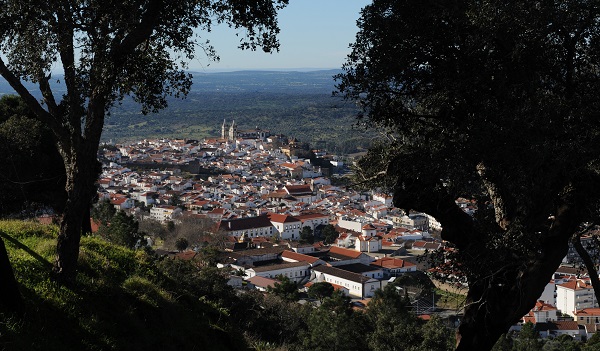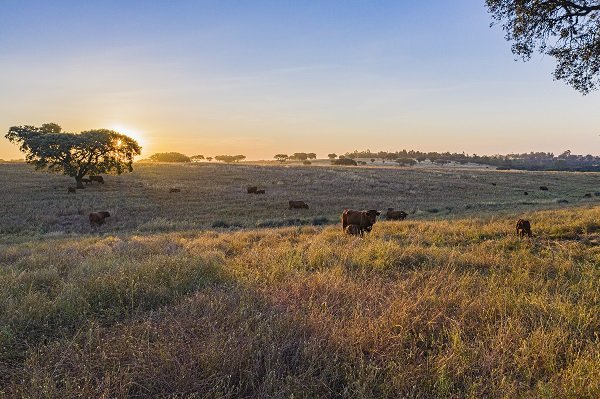Portugal is a small nation, about the size of Maine, and home to 10 million souls. But it is an ancient nation too, dating back to the 12th century, and influenced by ancient Greeks, Arabs and Romans.
During the Renaissance, Évora became a capital of culture, as the nation thrived with overseas trade. And the last dynasty of Portuguese kings, who built a university at Evora. Vila Viçosa remained a seat of power and letters, as the ancestral home for the last dynasty. And, while Portuguese writing is both deep and diverse, the vice of poets who wrote from the Alentejo are linked to the land — here are few of the poets and writers who have called this vast and romantic province home, and lived in its inspiration-as well as a few novels set amid its green and yellow plains.
Monica Ali’s Alentejo Blues is set in the rural Alentejo village of Mamarrosa, and transports it into the lives of the locals — such as an unhappy cafe owner and a gay pig farmer. It is a deep dive into the lives of a small fictitious town in the sunny province of the Alentejo.
Flor Bela d'Alma da Conceição was born and buried in Vila Viçosa. Under her pen name, Florbela Espanca she infused passion as well as feminism into her poetry. She smashed rules for women, attending the University of Lisbon's School of Law, and being married three times. She died on her 36th birthday, leaving a legacy that forever changed Portugal. Espanca sonnets were starkly contemporary and daring, and she broke the ceiling of a man’s world.
My soul, from dreaming you, is lost
My eyes are blind to see you!
You're not even my reason for living,
Because you are already my whole life!
I don't see anything like that crazy…
I step into the world, my love, to reading the mysterious book of your being
The same story!”
Everything in the world is fragile, everything passes…
"When they tell me this, all the grace
From a divine mouth speaks to me!
And, looking at you, I say from the trail:
"Ah! Worlds can fly, stars die,
That you are like God: Beginning and End!…”
Manuel da Fonseca was born Santiago do Cacém, and often wrote tales of the hard lives his fellow Alentejanos lived. He published his novel Rosa dos Ventos in 1940. His works have been translated into many languages and one was made into a film. A prolific and realist writer his last work Obra poética was published in 1984.
José Valentim Fialho de Almeida, better known as Fialho de Almeida was born in Cuba and was a writer who was part of the Symbolism and the Decadent movement. A staunch republican — he died not long after the fall of the monarchy.
José Maria dos Reis Pereira, better known as José Regio, was a poet and writer who spent most of his life in the Alentejo city of Portalegre. His house in that city is today a museum, and his poem about Portalegre still defines it today.
"In Portalegre, city
In the Alto Alentejo, surrounded
By mountains, winds, cliffs, olive trees and cork oaks
In the house where I lived, old,
Full of bad and good smells
Of the houses that have a history,
Full of tenuous, but alive, haunting memory
From ancient people and façade,
Full of sun on the windows
And dark in the corners,
Full of fear and peace,
Of silences and amazement.”

The Letters of a Portuguese Nun was first published anonymously by Claude Barbin in France in 1669. The love letters are often ascribed to a 17th-century Franciscan nun in a convent in Beja called Mariana Alcoforado. The letters were written to a French lover, Noël Bouton, Marquis de Chamilly who came to Portugal to fight in the Restoration War 1663–1668. The young nun was said to have first seen the young officer from her window, a local monument today called the Janela de Mértola.
Garcia de Resende was born Évora, and his house is a monument to this day. He was a Portuguese poet at the rise of the Portuguese empire, and served kings D. Joao II and D. Manuel I as a royal secretary.
António Lobo de Almada Negreiros was born in Aljustrel, and was a well-known journalist, writer, essayist and poet who traveled the world.
Almodôvar’s Museu da Escrita do Sudoeste is dedicated to ancient conic writing. The museum's permanent collection has around 20 pieces, including a permanent collection of 16 stelae discovered in the archaeological nucleus of Almodôvar.



